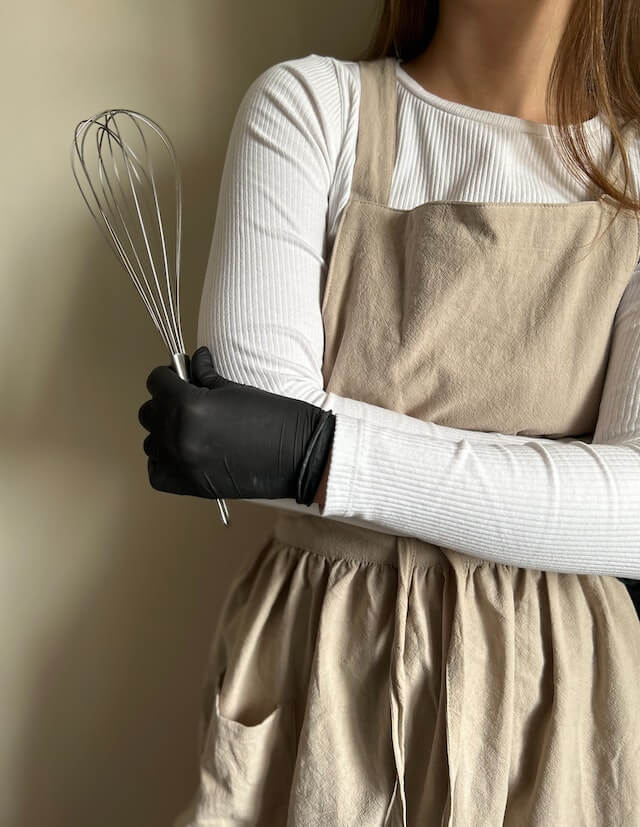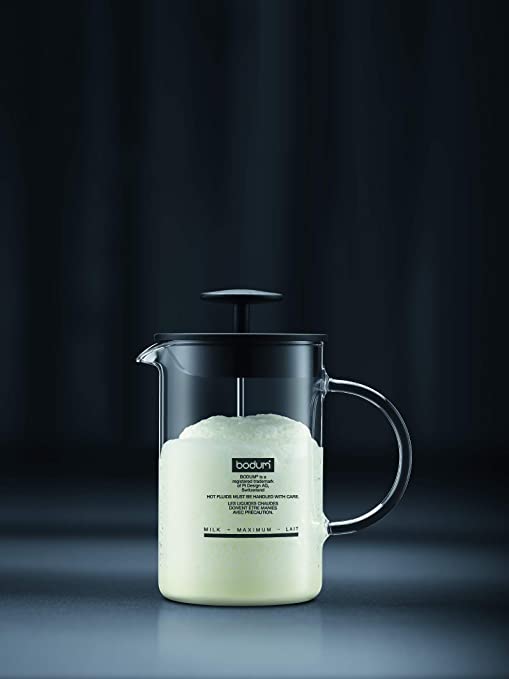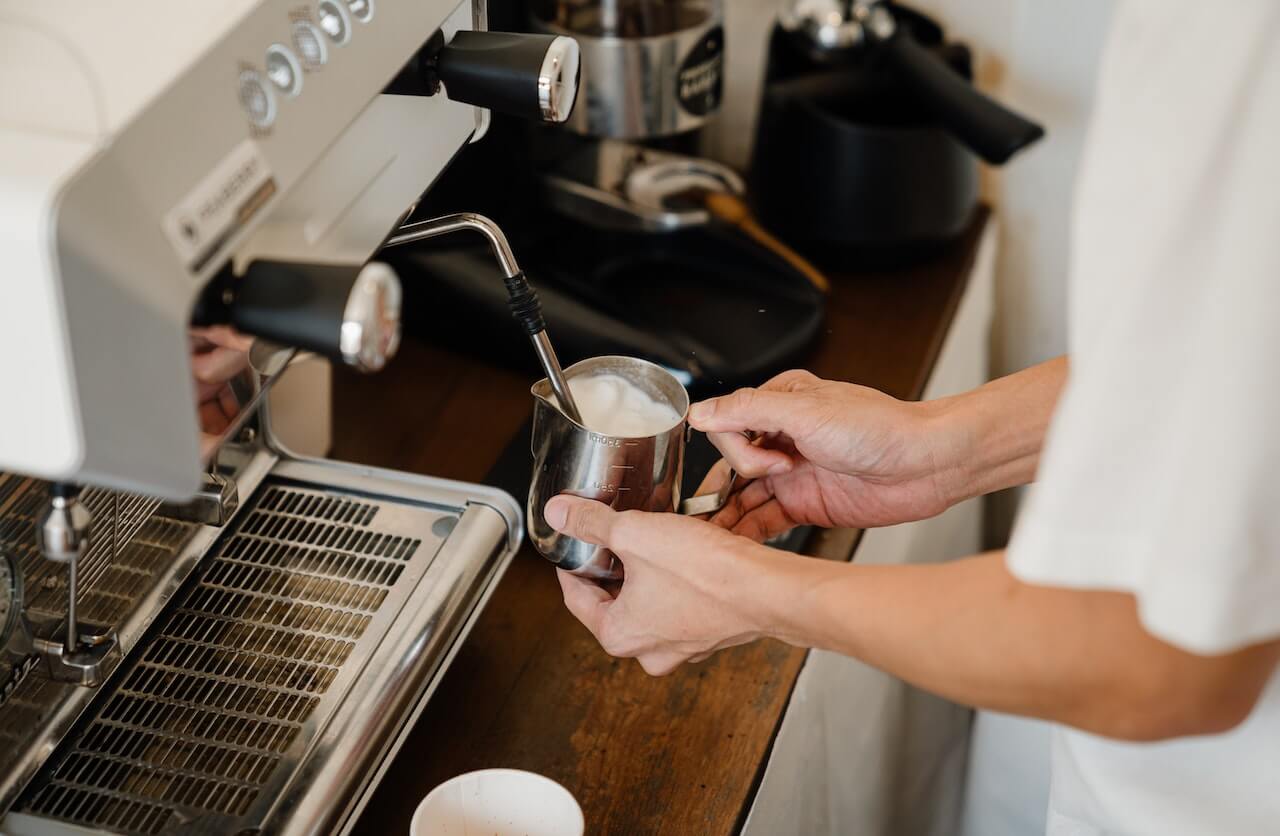Your cart is currently empty!
Outline
I. Introduction
- Importance of frothed milk in coffee beverages
- Overview of different methods for frothing milk at home
II. Method 1: Utilizing a Steam Wand Frother
- Explanation of steam wand frothers and their usage
- Step-by-step instructions for frothing milk with a steam wand
- Tips for achieving the desired froth consistency
- Examples of coffee beverages that benefit from steam wand frothed milk
III. Method 2: Manual Frothing Method
- Introduction to the manual frothing method using a whisk or hand mixer
- Detailed instructions for frothing milk manually
- Tips to create a velvety froth without specialized equipment
- Recommended coffee drinks to enjoy with manually frothed milk
IV. Method 3: Using a French Press
- Explanation of how a French press can be used to froth milk
- Step-by-step instructions for frothing milk with a French press
- Tips for achieving a good froth consistency with this method
- Coffee beverage suggestions that pair well with French press frothed milk
V. Other Easy Methods for Frothing Milk
- Introduction to alternative methods such as shaking in a jar or using a handheld frother
- Step-by-step instructions for these simple frothing techniques
- Ideas for coffee drinks where these methods work effectively
VI. FAQs for Frothing Milk at Home
- Ideal milk fat content for frothing
- Recommended milk temperature for frothing
- Tips for troubleshooting common frothing issues
- Can non-dairy milk be frothed? Tips for frothing non-dairy alternatives
VII. Conclusion
- Recap of the various methods discussed
- Encouragement to experiment and find the preferred frothing method
- Importance of frothed milk in enhancing coffee experiences
Now, let’s proceed with the introduction, and then we’ll dive into each method in detail.
Introduction:
Frothed milk adds a delightful touch to coffee beverages, creating a creamy and velvety texture that enhances the overall taste and visual appeal. While enjoying the frothy goodness at your favorite café is a treat, you can also achieve the same results in the comfort of your own home. In this article, we’ll explore different methods for frothing milk at home, ranging from utilizing a steam wand frother to manual techniques and even creative options like using a French press. Whether you’re a coffee enthusiast or a latte lover, learning how to froth milk at home opens up a world of possibilities to elevate your coffee experience. Let’s dive into the details of each method and discover the perfect frothing technique for you.

Method 1: Utilizing a Steam Wand Frother
Steam wand frothers are commonly found in espresso machines and are designed specifically for frothing milk. They create rich and creamy microfoam, perfect for crafting lattes, cappuccinos, and other milk-based coffee beverages. To froth milk with a steam wand:
- Start by filling a small stainless-steel pitcher with cold milk, ensuring it’s below the maximum capacity to allow room for expansion during frothing.
- Place the steam wand tip just below the surface of the milk and turn on the steam. Position the pitcher at a slight angle and create a whirlpool effect by moving the wand in a circular motion.
- As the milk froths, maintain the whirlpool motion while keeping the wand near the surface. Adjust the depth of the wand to control the amount of air incorporated into the milk.
- Once the desired froth consistency is achieved, turn off the steam wand and wipe it clean. Tap the pitcher gently on a flat surface to remove any larger bubbles.
- Your perfectly frothed milk is now ready to be poured over a shot of espresso or used in your favorite coffee creation.

Method 2: Manual Frothing Method:
If you don’t have a steam wand frother, don’t worry. You can still achieve a frothy milk texture using a manual method with basic kitchen tools. Here’s how:
- Heat the desired amount of milk in a saucepan over medium heat, stirring occasionally to prevent scorching. Remove the pan from the heat just before the milk starts to boil.
- Pour the heated milk into a large bowl or a deep pitcher.
- Hold a whisk or a hand mixer at an angle and vigorously whisk the milk in a circular motion. Continue whisking until the milk begins to froth and increases in volume.
- Adjust the intensity and duration of whisking to control the frothiness. Whisking for a longer time will create more foam, while shorter whisking will result in a lighter froth.
- Once you’ve achieved the desired froth consistency, your manually frothed milk is ready to be incorporated into your favorite coffee beverages.

Method 3: Using a French Press:
A French press, commonly used for brewing coffee, can also be repurposed to froth milk. Follow these steps:
- Heat the milk in a saucepan until it reaches the desired temperature. Avoid letting it boil.
- Pour a small amount of heated milk into the French press, filling it about one-third full.
- Place the plunger assembly on top of the French press but don’t push it down.
- Hold the lid securely and vigorously pump the plunger up and down, creating a frothy texture. Continue this motion for about 20-30 seconds or until the milk has doubled in volume.
- Remove the plunger and gently heat any remaining milk on the stove if needed.
- Pour the frothed milk into your coffee, leaving any un-frothed milk in the French press.

Other Easy Methods for Frothing Milk:
Apart from the methods mentioned above, there are several other easy techniques you can try at home to froth milk for your coffee creations. These alternative methods may not produce the same level of microfoam as the steam wand frother, manual frothing, or using a French press, but they can still add a delightful touch of frothiness to your beverages. Let’s explore these additional techniques:
- Shaking Milk in a Tightly Sealed Jar: Pour your desired amount of milk into a clean, tightly sealed jar. Ensure that the jar is only filled halfway to allow room for expansion. Shake the jar vigorously for about 30-60 seconds until the milk develops a frothy texture. The shaking motion incorporates air into the milk, creating a light froth. This method is quick, convenient, and doesn’t require any specialized equipment.
- Using a Handheld Frother: A handheld milk frother, also known as a milk whisk or electric frother, is a simple tool designed specifically for frothing milk. It consists of a small whisk attached to a motorized handle. To use this method, heat your milk in a saucepan or a microwave-safe container. Once heated, immerse the whisk into the milk, ensuring it’s fully submerged. Activate the frother, and move it up and down in the milk, creating a whirlpool effect. Continue frothing until you achieve the desired level of frothiness. Handheld frothers are affordable, portable, and easy to use, making them a popular choice among coffee enthusiasts.
These alternative techniques may be suitable for those who don’t have access to specialized equipment or prefer a more hands-on approach. While the resulting froth may not be as dense or creamy as the methods mentioned earlier, they can still enhance the texture and visual appeal of your coffee beverages.
Remember, experimentation is key when exploring different frothing techniques. Adjust the duration, intensity, and milk temperature to find the ideal frothing method that suits your taste preferences. Enjoy the process of discovering your preferred frothing technique and delight in the art of creating beautifully frothed milk for your coffee moments.
FAQs for Frothing Milk at Home:
Q1: What is the ideal milk fat content for frothing?
- Whole milk with a higher fat content (around 3-4%) tends to produce a richer and creamier froth. However, you can still achieve a decent froth with lower-fat milk options like 2% or even skim milk. Experiment with different milk fat contents to find your preferred balance of creaminess and frothiness.
Q2: What is the recommended milk temperature for frothing?
- The ideal milk temperature for frothing is between 140°F to 150°F (60°C to 65°C). It’s important to avoid overheating the milk as it can affect the taste and texture. Using a thermometer can help you achieve the desired temperature range.
Q3: How can I troubleshoot common issues while frothing milk?
- If the milk is not frothing well, make sure the steam wand or whisk is positioned correctly, just below the milk’s surface. Additionally, ensure that you’re using fresh, cold milk and that the steam wand or whisk is clean. Experiment with different techniques, such as adjusting the depth of the wand or whisking speed, to achieve the desired froth consistency.
Q4: Can non-dairy milk be frothed? Are there any specific tips?
- Yes, non-dairy milk can be frothed, although the results may vary depending on the type of milk. Plant-based options like soy, almond, oat, and coconut milk can be frothed. It’s important to note that some non-dairy milk may not produce the same level of froth as dairy milk. Choose varieties specifically labeled as a barista or frothing-friendly for better results.
Q5: Can I froth milk in advance and reheat it later?
- It’s generally recommended to froth milk just before use, as the texture and consistency may change upon reheating. Frothed milk is best enjoyed immediately for optimal taste and froth quality. However, if necessary, you can gently reheat the frothed milk using low heat while stirring constantly to avoid scorching or separating.
Conclusion:
Mastering the art of frothing milk at home opens up a world of possibilities for creating café-quality coffee beverages. Whether you have access to a steam wand frother, prefer manual methods, or opt for alternative techniques like using a French press, there’s a frothing method to suit your taste and equipment. Experiment with different methods, milk types, and froth consistencies to find your perfect frothed milk for lattes, cappuccinos, and more. With a little practice and creativity, you’ll be able to enjoy barista-worthy frothed milk right in the comfort of your own kitchen. Cheers to delicious coffee moments!
